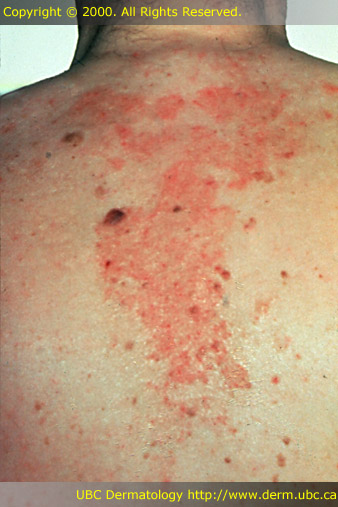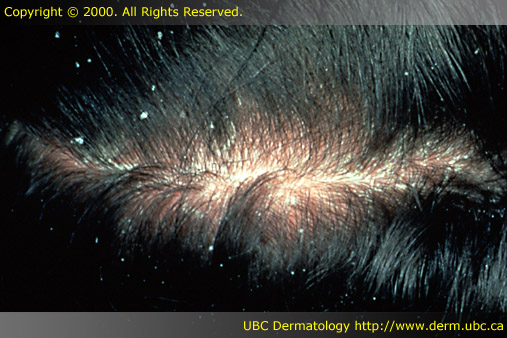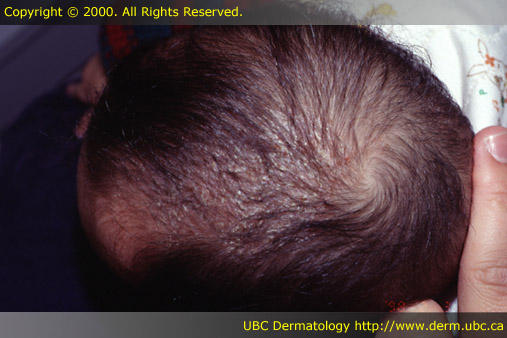Seborrheic dermatitis
• pathogenesis probably involves sebum production and Pityrosporum
fungus
- seborrheic dermatitis is located at sites of increased sebaceous gland
density and activity
-
Pityrosporum is a lipophilic yeast that thrives on the lipids in sebum
-
antifungals active against Pityrosporum can improve seborrheic dermatitis
-
the scaling and inflammation seen clinically in seborrheic dermatitis may
represent a host response to increased numbers of Pityrosporum on the skin

![]()
• clinical features:
-
Adults:
- dandruff (dandruff alone probably represents the most mild form of
seborrheic dermatitis)
- ill-defined areas of erythema with greasy-appearing scale
-
face: glabella, eyelids, eyebrows, nasolabial folds, nose,
mustache/beard, ears
-
trunk: presternal, umbilicus

![]()
• clinical features:
- Infants:
-
cradle-cap: thick adherent greasy scale over the scalp
-
seborrheic dermatitis in infancy may also present as dermatitis in the
diaper region

![]()
• associated disorders: seborrheic dermatitis is seen more frequently
in:
-
Parkinson’s disease and immobility due to other neurologic disorders
(e.g. stroke, head or spinal cord injury)
- HIV
infection
![]()